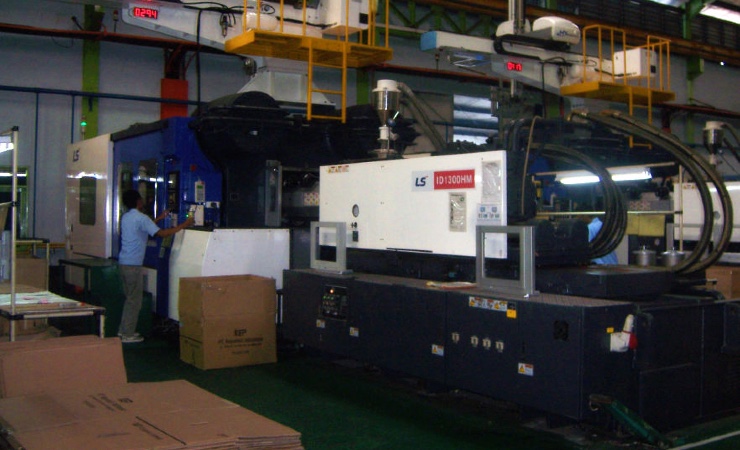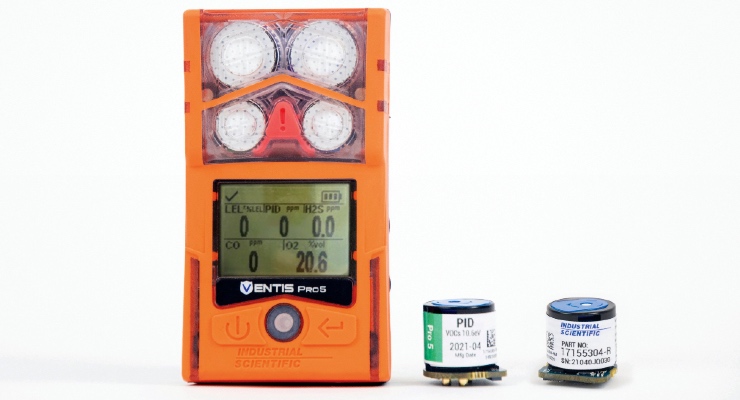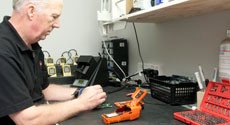
Industrial Scientific director Gavin Boorman discusses VOC detection in this Q&A about the new sensor for Ventis Pro5 portable gas detectors.
Gavin Boorman, managing director and general manager of Industrial Scientific’s Europe, Middle East, and Africa (EMEA) regions, answered some questions about the newest sensor for Ventis Pro5 portable gas detectors – a photoionization detector (PID) for identifying volatile organic compounds (VOCs).
Q: What is the Ventis Pro5 with a PID VOC sensor?
A: The Ventis Pro5 with a PID VOC sensor is the smallest, most durable, most compact, most comfortable, most reliable PID detector on the market. It’s going to be a game changer for industrial hygienists around the world.
The Ventis Pro5 multi-gas portable gas detector is already a super product – tens of thousands of people around the world use Ventis Pros every day for all sorts of difficult applications. There’s no other platform for a PID sensor that gives what ours give.
Aside from the hardware itself, there’s a variety of connectivity solutions: BLE, Wi-Fi, and cellular. The Ventis Pro5 with PID can also connect to Industrial Scientific’s iNet platform, which allows for live monitoring, data management, and end-to-end maintenance services. It’s a complete package for VOC detection and monitoring.

Q: Why are PID sensors so important for VOC detection?
A: Since the long-term health risks associated with exposure to toxic hydrocarbons are more widely understood now, PID sensors have become more common for VOC detection. The basic issue is that a lot of these organic vapours are toxic before they become flammable.
For many years, it was standard to measure the lower explosive limits (LEL) at which VOCs like methane, pentane, butane and petrol can explode, or the flammable level at which they can cause fires.
But we now know there are other long-term health risks from exposure to VOCs at lower levels. Many of the heavier organics, like diesel or jet fuel, are toxic before they become flammable.
Risk of explosion is serious enough, but repeated exposure to those substances can also increase the risk of serious health conditions such as respiratory problems and cancer.
Q: What industries should be particularly interested in this new PID sensor for VOC detection?
A: The applicable industries are broad: anywhere where VOCs are present. Some of the common verticals include:
- refineries
- chemicals
- fuel storage & transmission
- hazmat
- surveyors
- water treatment
- food & beverage
- plastics & polymers
This list isn’t exhaustive – there are more applications than you might think.
Q: Who will benefit from using the PID VOC sensor?
A: Occupational and industrial hygienists will find the sensor beneficial because they’re concerned with health risks as opposed to just safety. Another role is environmental protection officer, particularly as take-action thresholds of these gases continue to decrease.
Because people are recognising that VOCs are dangerous even in small quantities, monitoring for them is becoming mainstream in health, safety, and environment (HSE) management, too.
Q: In what ways does the performance of the PID sensor for the Ventis Pro5 improve upon traditional PIDs?
A: The big one is humidity response. One of the issues with all PID sensors traditionally is that they suffer from response to humidity.
My favourite demonstration of this is the coffee cup test. If you take most of the PIDs on the market and wave them over a warm cup of coffee, the sensors will drift and give you false alarms. This is a huge challenge because in many industrial applications, as you walk around a work site you will see changes in temperature, humidity, and pressure. That’s normal, but traditional PID sensors were very sensitive to those shifts and would give you false data. This can lead to workers taking countermeasures for a gas exposure that never occurred.
The PID sensor for the Ventis Pro5 uses a unique patented technology called fence electrode. They have an extra electrode built into the stack of the sensor. This sensor compensates for some of the drift due to changes in temperature or humidity.
If you hold the Ventis Pro5 with PID over a hot cup of coffee, it’s stable. This is a huge advantage for workers – they won’t have to deal with false alarms.
Another performance improvement is a longer battery runtime. Our new PID requires less power than traditional sensors.
Overall, the PID sensor for Ventis Pro5 is more stable, robust, and gives better long-term performance than older generations.
Q: How does the Ventis Pro5 with a PID sensor compare to a sampling monitor for VOCs, like the MX6 iBrid?
A: The main differences are the sensor and the gas monitor itself. Sensor technology has evolved over time, which means that the PID sensor for the Ventis Pro5 has significant performance advantages over the PID sensor used in the MX6 iBrid.
Secondly, while the MX6 iBrid is a fantastic product, it’s heavy. If you have to wear the detector all day, size becomes an issue. On the other hand, the Ventis Pro5 is something you can clip on your uniform and forget about. It’s comfortable, small and lightweight. The Ventis Pro5 is truly a personal gas detector.
The Ventis Pro5 also opens up an entirely new option for connected VOC detection. Before, readings were logged on the monitor and couldn’t be accessed until after the job was done and the user returned the monitor to a dock. Now, real-time gas readings from the monitor transmit directly to the cloud, where stakeholders can see what’s happening in the field.
Q: Are there trade-offs when you decide to use a PID sensor? Do you have to replace the LEL sensor?
A: There is no trade-off because they’re complementary technologies. Before VOCs become flammable, the PID detects the toxic substance in parts per million (PPM) to protect the user. Both readings are valuable, so 90% of the time you’re using LEL and PID together in the same device.
Q: PID sensors obviously present serious benefits for users. Why are they not more commonly used for VOC detection?
A: In the past, PID sensors were complicated, expensive and hard to maintain. With new advances, the cost of ownership has decreased, and you don’t need to be a specialist to use it. You can use the Ventis Pro5 with a PID VOC sensor just like any other gas detector – there’s nothing fancy or difficult about it.
Q: What excites you the most about this product?
The Ventis Pro5 with PID sensor helps to further our vision: to eliminate death on the job by the year 2050.
Right now there are tens, even hundreds of thousands of workers who are exposed to toxic hydrocarbons every single work day. Nobody’s managing it. Nobody’s controlling it.
Those people are at risk, and while it might not be an immediate danger to health, there’s the threat of long-term health issues. Our goal is to protect people from these hazardous substances and give them warning much earlier so that the employers can take counter measures.
Get in touch to learn more about VOC detection using the Ventis Pro5 with PID VOC sensor…
- Fill out the “Enquire Here” form below
- Ph (06) 758-3030 ext 2 » (click to call)
- Email us »
- Visit our Contact page »
A version of this article first appeared at Industrial Scientific’s blog here. Republished with permission.
Enquire Here…
Fields marked with an * are required
Complete this form to get a firm quote or to make a general enquiry…


